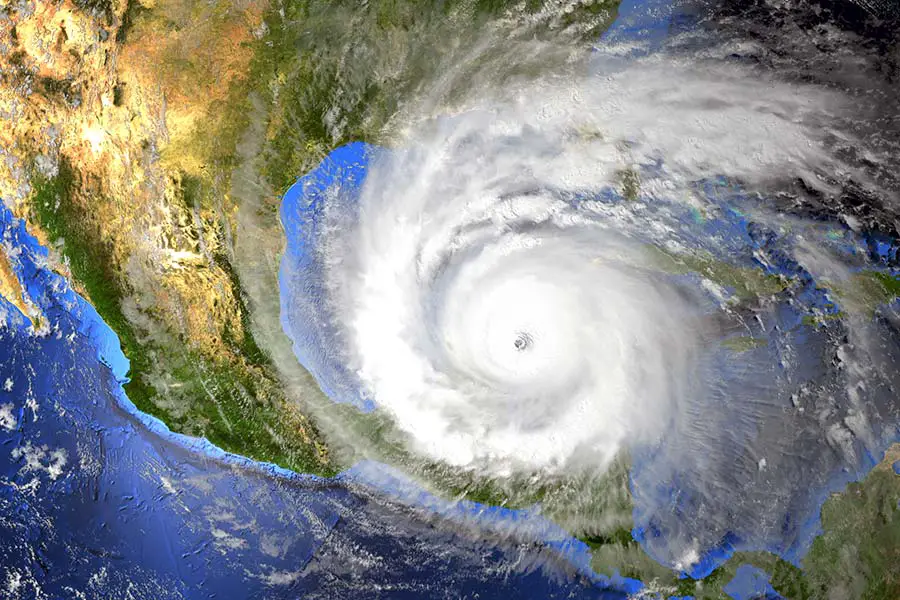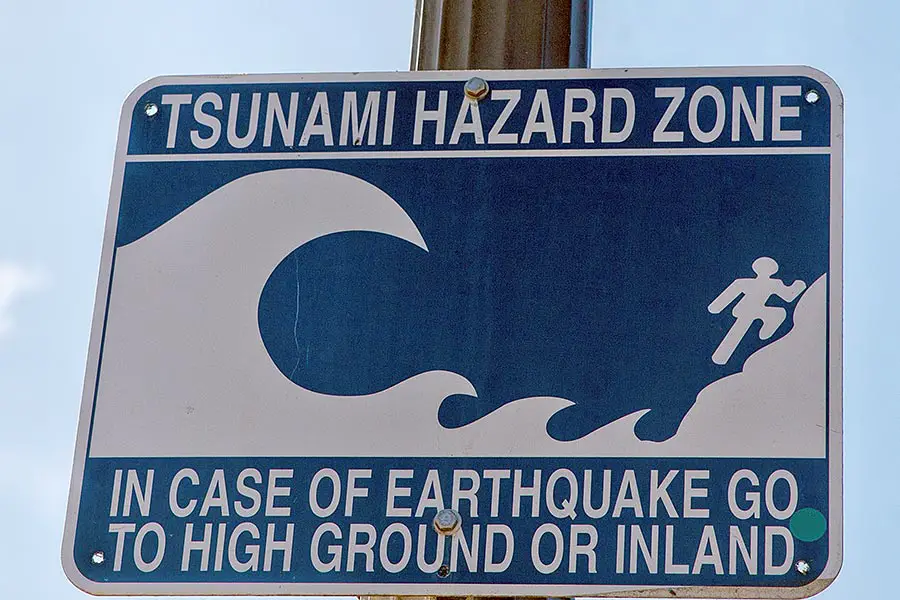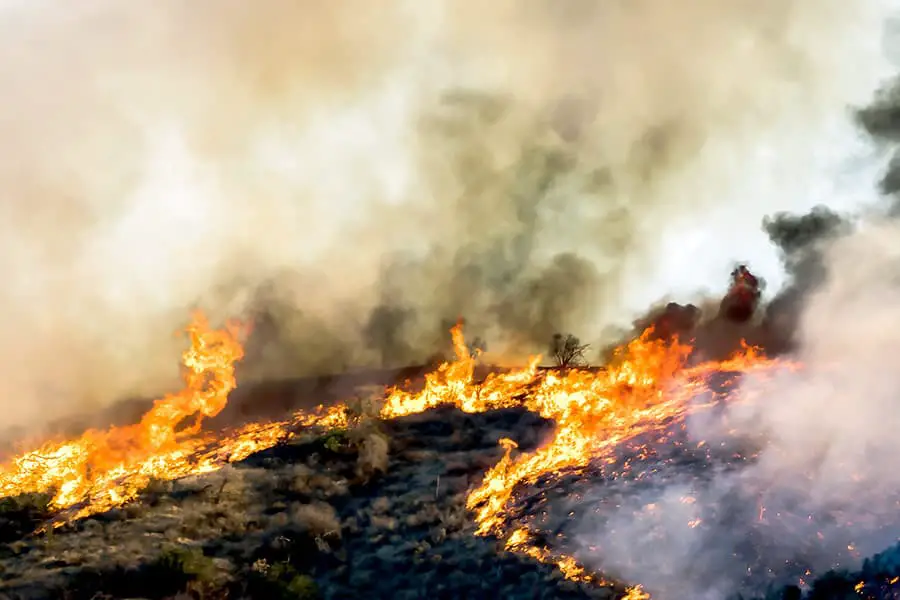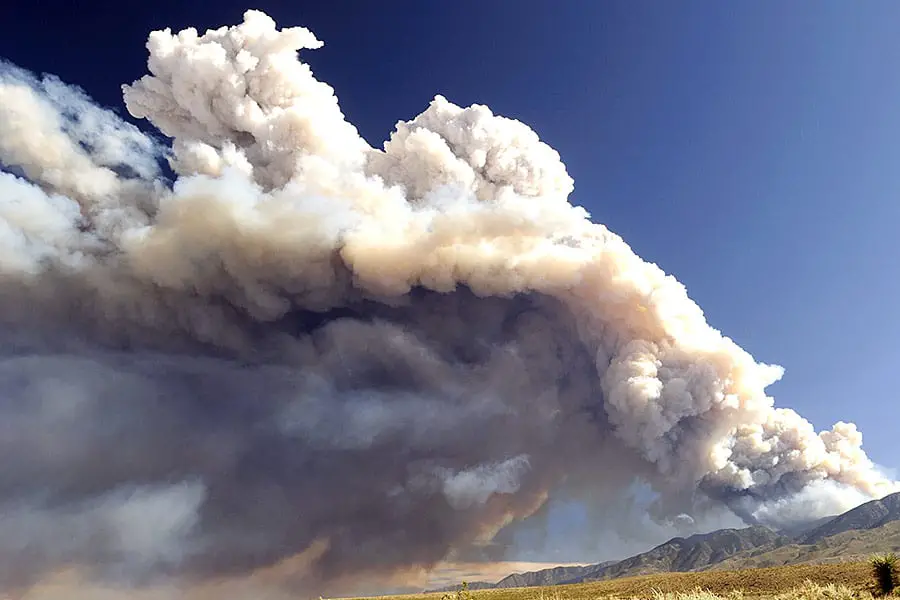
Nothing can ruin your vacation more than experiencing lousy weather or a natural disaster. On the East Coast, hurricanes are very common. Vacationers must plan their vacations and cruises around these massive storms. On the other side of the country, California is one of the world’s top tourist destinations and has miles and miles of coastlines. This begs the question, does California also get hurricanes?
The State of California does not get hurricanes. The southern part of the state does occasionally experience the remnants of hurricanes that have traveled north from Mexico. However, they are relatively mild storms by the time they reach California.
Despite this, California does experience other weather events and natural disasters that you should be aware of before planning a trip to the Golden State. So we’ve created this guide to help you understand what hurricanes are, why California doesn’t get them, and what other natural phenomena that you could encounter in California.
Hurricanes – Does California Get Them?
A hurricane is a large rotating storm that forms over warm waters in tropical areas. To be considered a hurricane, the wind speed must reach a minimum of 74 miles per hour. Storms are classified as a tropical storm, if the winds are slower than 74 miles per hour but higher than 39 MPH.
There are five categories of hurricanes that indicate their severity. The hurricane’s wind speed determines these categories. For example, a category 2 hurricane is stronger than a category 1 and so on. A category 5 hurricane starts at 157 MPH hours but has no maximum speed.
All tropical storms and hurricanes get names (like Andrew or Katrina). The names are in alphabetical order and alternate from male to female (For example, Ana, Bill, Claudette, Danny, Elsa, etc.) Names are used to help streamline communication and avoid confusing the storms.
Hurricanes form when warm moist air over water starts to rise. As the air rises, it is then replaced by cooler air which warms and also rises. As this process continues, thunderstorms begin to form. Then, as the storm gets larger, it starts to rotate. Once the wind speeds reach 39 MPH, it becomes a tropical storm and receives its name. However, it’s important to note that not all tropical storms become strong enough to be categorized as hurricanes.
Despite the different names, hurricanes, cyclones, and typhoons are all the same type of storm. The only difference is where they occur on the globe. These storms are called hurricanes when they occur in the Northern Atlantic Ocean and Northeast Pacific. Cyclones happen in the Indian Ocean and South Pacific. Typhoons can be found in the Northwest portion of the Pacific in Asia.
No hurricane has ever hit California. The reason for this is that hurricanes lose their power as they move into cooler waters. The water off the California coast comes from Alaska and is very cold. However, Southern California has experienced strong remnants of hurricanes that have lost their power as they moved north. Only two storms that still maintained their tropical storm status have ever made landfall in California.
While hurricanes are not a major threat to the state, California is prone to other weather phenomena and natural disasters.
Bay Area Answers Fun Fact: The fastest hurricane wind speed ever recorded was Hurricane Patricia in 2015, with maximum sustained winds of 214 mph.
Does California Get Tsunamis

Tsunamis are massive walls of water that occur when earthquakes happen on the ocean floor. Because California is prone to earthquakes, it is also at risk of tsunamis. Over 150 tsunamis have hit the California coast since 1800. However, most of these were barely noticeable and caused no damage.
The largest tsunami to hit California happened on March 28, 1964, as a result of a massive 9.2 earthquake in Alaska. The surge was 21 feet tall and killed 12 people in Crescent City. Fortunately, most of California’s coastline is lined with cliffs that help protect residents, but low-lying cities on the coast are still vulnerable. In areas where the land is at sea level, tsunami waves can travel up to 10 miles inland.
The good news is that earthquakes that happen across the Pacific allow hours to notify the public of an incoming tsunami. For example, the 1964 tsunami took approximately 4 hours to travel from Alaska to the California coast.
However, a closer earthquake or underwater landslide could leave only minutes of warning. So if you are in tsunami prone areas, be aware of where the tsunami evacuation routes are.
Other Posts of Interest
- Is San Francisco In The Mountains?
- Is South San Francisco Part Of San Francisco?
- What Was Treasure Island Used For?
- Do You Need A Car To Live In San Francisco?
Does California Have Tornadoes
It is possible for tornadoes to form in California, but they are not very common. On average, the state experiences about a dozen or so tornadoes per year. Most of these occur in the Central Valley, where there are large expanses of flat land. While some can become large, as you see in Tornado Alley, most are weak and short-lived. Tornadoes are ranked on a scale of EF0 to EF5 (EF5 being the strongest). To put this in perspective, the largest tornado ever recorded in California was an EF3.
California Earthquakes
One of the most significant risks to California is earthquakes. Earthquakes occur when tectonic plates grind against each other and release the pressure that is built up over long periods of time. Fault lines are breaks or fractures in the tectonic plates that produce earthquakes.
There are currently 500+ fault lines in California that are considered active and potentially hazardous. The most famous fault line is the San Andreas Fault which runs the entire length of the State of California. This fault was responsible for the massive 7.9 magnitude earthquake that caused massive devastation.
Although these large events can occur at any moment, large earthquakes don’t happen often. In 2020, the state experienced only one earthquake that exceeded a magnitude of 6.0. Most earthquakes are extremely small and go unnoticed. In the same year, California had nearly 65,000 earthquakes that were smaller than 2.0, which people typically don’t feel.
Bay Area Answers Fun Fact: Despite California being known for earthquakes, I bet you didn’t know Alaska has more earthquakes than any other US state. In fact, Alaska experiences about 11 percent of the world’s earthquakes each year.
California & Wildfires

Because of California’s dry climate and hot summers, the state is at risk of large wildfires. On average, the state experiences over 60,000 wildfires each year. Fortunately, many of these fires are extinguished before they become large. However, each year a handful of wildfires reach massive proportions.
So how do these wildfires get started? Wildfires can start naturally from lightning strikes or by human activity like campfires, downed power lines, people intentionally setting them, accidentally, and other means.
The August Complex Fire in August of 2020 was the largest fire ever recorded in state history. The fire burned over a million acres of land and destroyed over 900 buildings and structures. Fortunately, most of the fire occurred in National Park land that is not populated. For this reason, it only resulted in the death of one person despite its size. However, other smaller fires have claimed the lives of more people, such as the Camp Fire in 2018 that killed 85 people.
Fortunately, most urban areas are safe when it comes to wildfires. However, many wildfires happen in wooded or hillside regions where the population is more sparse. Still, thousands of people must be evacuated from their homes each year during these fires.
Even if you aren’t living in or visiting an area where wildfires occur, the fires produce a lot of smoke that greatly affects air quality. Smoke can cause serious health problems if you have prolonged exposure to poor-quality air. During peak wildfire season, the plumes of smoke can be seen from space as they drift hundreds of miles.

How to Be Prepared When Visiting California
While it is unlikely that you will experience any significant weather event or natural disaster while visiting California, it is essential to take a moment to consider what you and your family would do in the event of an emergency. Discuss a plan or place for you and your family to reconnect if you are separated during a natural disaster. You can also choose a friend or family member who is out of state to contact in the event of an emergency.
Your Biggest Risk Will Likely be Earthquakes
If you experience an earthquake, find shelter under a large piece of furniture like a desk or table. Contrary to popular belief, it is no longer common practice to take shelter in a doorway. Once the shaking stops, exit the building. Don’t try to leave the building when the shaking is still happening, as you could get struck by falling debris. Most hotels have provisions and protocols in place to protect their guests following a major earthquake.
California is just like any other area of the country; each region has its own unique set of weather events. So don’t worry. Just prepare as you would when visiting or living in any location in the United States and enjoy California while you are here!





